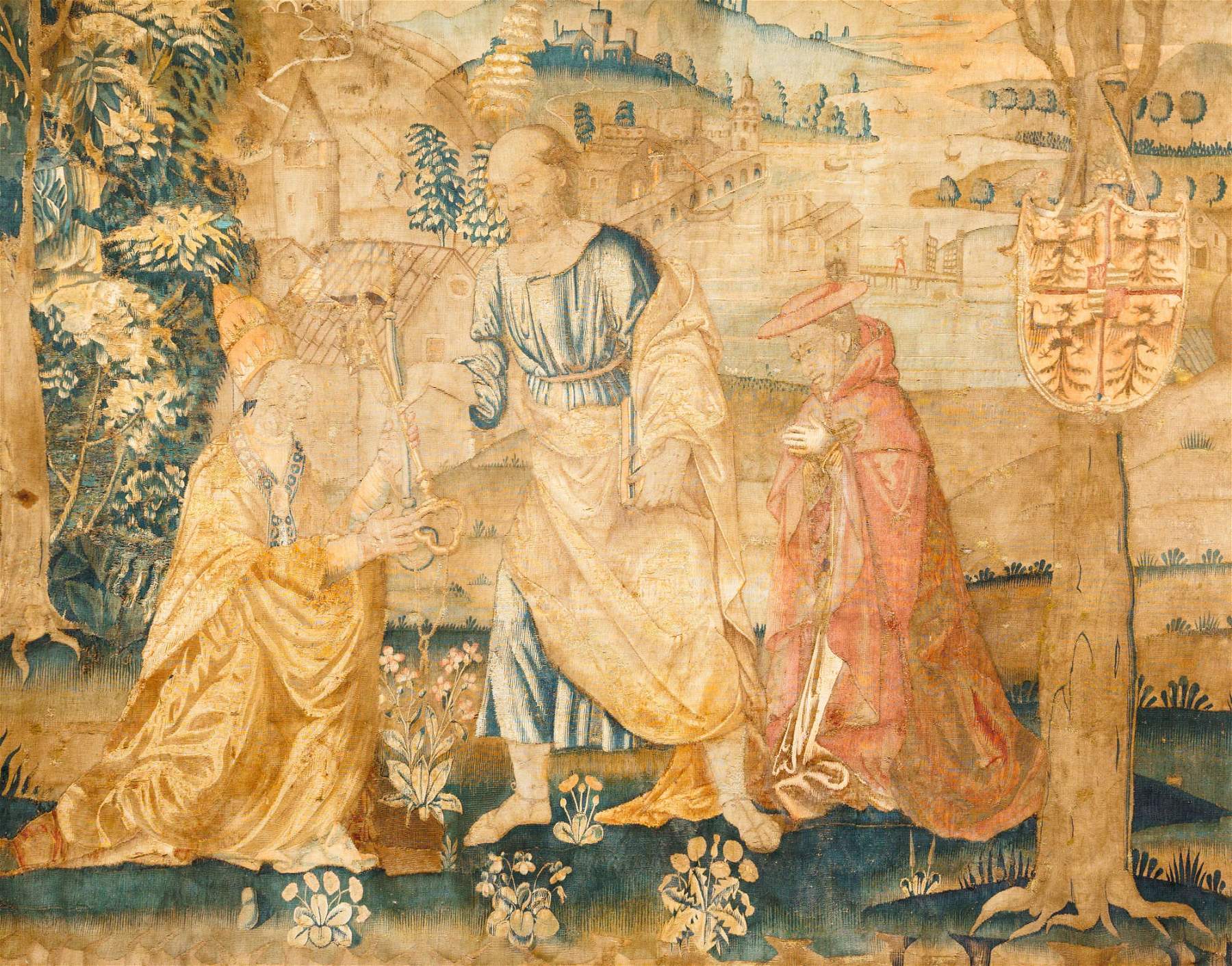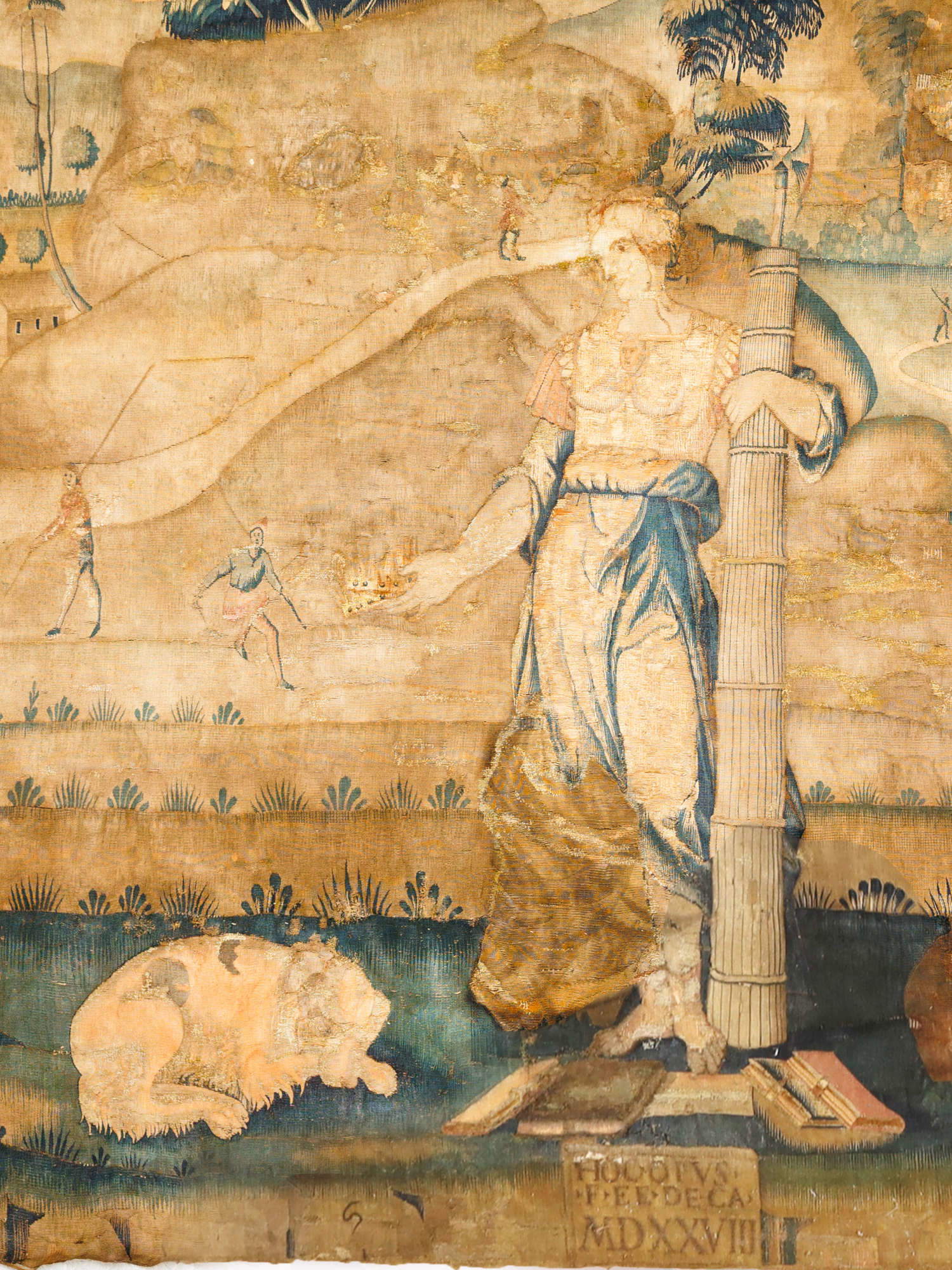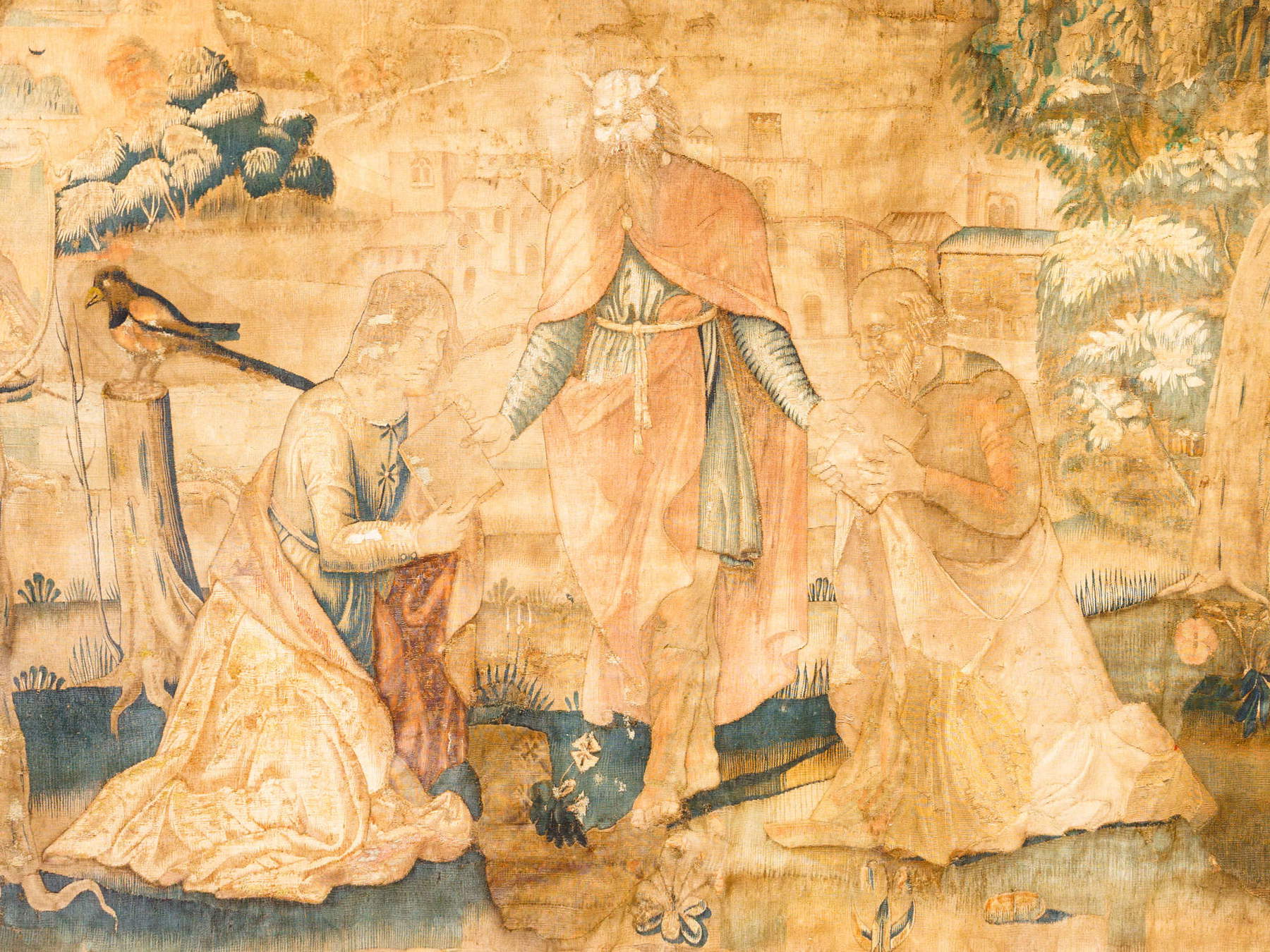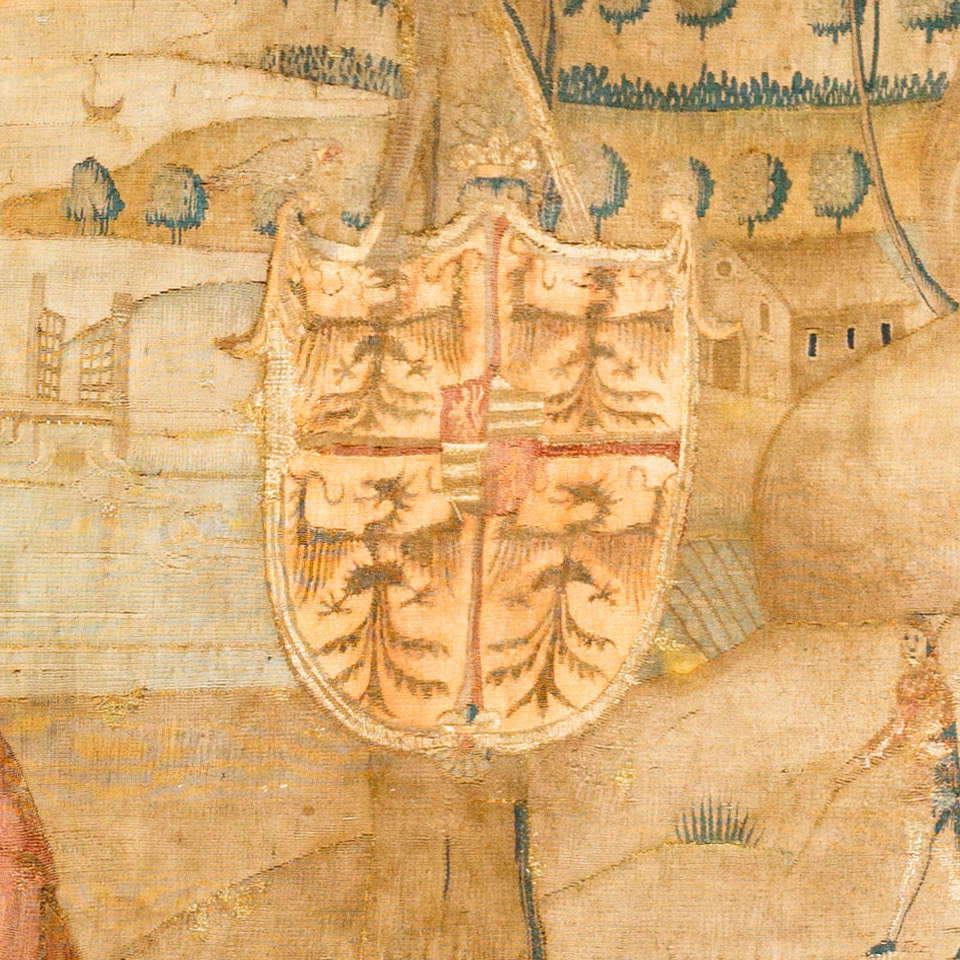Strike by the Ducal Palace in Mantua , which bought at auction, at an extremely low cost (£12,000) an important Gonzaga tapestry from 1528, specifically a “spalliera,” or horizontal format tapestry, in this case nearly six meters wide. The auction was held on Tuesday, June 4, at Rosebery’s in London. The artifact purchased from the Ducal Palace bears the coat of arms and dedication to a cardinal of the Gonzaga family. Its imposing dimensions, 175x587 cm, make it a work of great interest to scholars of Mantuan art: moreover, the tapestry was already known thanks to studies by Clifford Malcolm Brown and Guy Delmarcel in 1985 and a subsequent in-depth analysis conducted by Nello Forti Grazzini in 2010.
The tapestry depicts a hill and lake landscape, with theAllegory of Justice in the center. On either side are two groups of figures: on the left, St. Peter hands the keys to the kneeling pope, accompanied by a cardinal also kneeling. Near the cardinal is a coat of arms of the Gonzaga family hanging from a small tree. On the right side, Moses hands the tablets of the law to two kneeling figures, possibly identified as the Virgin and St. Joseph. Numerous other details, including animals and saplings, enrich the scene, which features at the bottom center a table with the date 1528 in Roman numerals. The style of the tapestry, although dating from the time when Giulio Romano was already active at the Mantuan court, recalls the works of artists prior to his arrival in 1524.





Thanks to Ezio Zani’s timely tip-off, the Ducal Palace was able to participate in the auction and win the tapestry for £12,000, a relatively low price considering its historical and artistic value. Nello Forti Grazzini stressed the importance of the tapestry, calling it “among the oldest surviving cloths of Italian design and probable manufacture.” It is speculated that the tapestry may have been woven in Mantua, but Ferrara, Modena or Milan are also considered as possible places of production, given the documented tapestry manufacturing activities in those cities during the period.
“The tapestry,” says Stefano L’Occaso, director of the Ducal Palace, “shows a composition reminiscent of the manner of Lorenzo Costa, the Ferrara artist who succeeded Andrea Mantegna as court painter in 1506; it is a work to be studied, because of its monumentality and importance, despite its less than optimal state of conservation. The tapestry certainly comes from Mantua, where Willelmo Braghirolli recalled it in 1879, writing that it had just been sold by an unidentified Mantuan; the tapestry then migrated abroad and in 1969 arrived on the island of Jersey, Great Britain. It did not return to Italy even for the exhibition on Gonzaga tapestries held at Palazzo Te in 2010. I would like to thank Ezio Zani from whom I first received the report of the piece at auction: we were thus able to move in time and participate in the vendit.”
The precious tapestry will soon be on public display in the Castle of San Giorgio, as part of a project to refurbish the Renaissance collections. This new acquisition represents an important enrichment for the cultural and artistic heritage of Mantua and will therefore be shared with all visitors to the Ducal Palace.
 |
| Mantua, coup of Ducal Palace that buys important 1528 tapestry for little money |
Warning: the translation into English of the original Italian article was created using automatic tools. We undertake to review all articles, but we do not guarantee the total absence of inaccuracies in the translation due to the program. You can find the original by clicking on the ITA button. If you find any mistake,please contact us.